Sept. 1, 2014 I admit, my first reaction to The Guardian Princesses was wince-worthy…
“Oh please, NOT more freakin’ princesses!”
Followed by, “Here we go with the chocolate covered broccoli bit embedding a stealth health “better for you” media message into the junk food genre of princess pablum.”
Finally, I settled into a more measured,
“Well, if they’re upending kid lit to bring in more diversity, nature, and the great outdoors, we DO need THAT in children’s books…I’m not thrilled about princesses being the ones to seed good habits, role model compassion and jump start social emotional learning in life… but let’s see what this is all about.”
Prosocial princesses? Um, okay. I’m listening…
As Disney/Pixar trots out a “New improved stronger, brighter, mightier!” style of princess with resilience and character, and Hollywood’s climate change finally warms to better film ‘sheroes,’ maybe market demand is veering towards indie, purposeful princesses to leverage this profitable category into more palatable offerings.
Startups aplenty seem to be trying to subversively ‘ease into’ making change, by painting the princess landscape with a different brush while still nestled closely under the petticoats and ballgowns of familiar formulas that ‘sell well.’
Look no further than all the recent media coverage of Goldieblox toy company, spoon-feeding STEM by using these tactics to encourage girls towards engineering, and getting some flak along the way. Their brand positioning builds on “Toys for Future Innovators” but their initial foundation was layered with pink think, pastels and a princess parade…sophisticated marketing savvy or familiar stereotypes?
There were plenty of ‘point/counterpoint’ views within even the same small circles of fem/STEM advocates. So why would Guardian Princesses risk being put through the same media ringer (not to mention drawing the ire of the mousehouse) as they try to seed good and change the princess narrative with a prosocial/education angle? We’ll find out today in this interview with Guardian Princesses co-founder Ashanti McMillon.
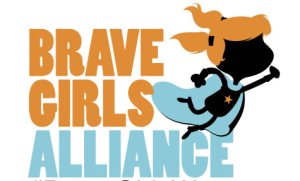 I admit with full disclosure that as a partner in the “Brave Girl Alliance,” a consortium focusing on debunking stereotypes and applauding girls as whole, complex people instead of media myths and ideals, I have had to “ice out personal bias” when it comes to the princess posse taking up valuable mindshare in the marketplace. So I’m an extraordinarily ‘tough sell.’
I admit with full disclosure that as a partner in the “Brave Girl Alliance,” a consortium focusing on debunking stereotypes and applauding girls as whole, complex people instead of media myths and ideals, I have had to “ice out personal bias” when it comes to the princess posse taking up valuable mindshare in the marketplace. So I’m an extraordinarily ‘tough sell.’
My BGA colleagues have already recapped the many reasons why “princess culture” has become a problematic sparkle silo in girls’ developmental context, including Peggy Orenstein’s “Cinderella Ate My Daughter,” (and her PBS tips to navigate this mega-phase), Lyn Mikel Brown/Sharon Lamb’s book Packaging Girlhood, Michele Yulo’s Princess Free Zone site and as of Sept 2, 2014, “The Princess Problem” a new book by media literacy professor Rebecca Hains, who takes her preK research “undercover” as a birthday party princess to deep dive the impact of this phenomenon.
Still, I can’t help but hold out hope that an eco-positive ‘stewards of the planet’ message might embed itself in education circles with springboards into STEM/eco-literacy, bio-diversity/plants and animals delivered via Trojan Horse ‘princess pill’ (hard to swallow, I know), shades of GoldieBlox and Roominate and others leveraging the pop culture zeitgeist in ‘whatever works/meet them where they are’ mode.
Speaking separately from BGA and simply as a former new product development creative director, it’s hard to knock a startup trying to use the very same tactics as marketers to flip the message in a positive direction…because, that’s exactly what we do with media literacy programs here at Shaping Youth.
Fast Company Design called them the ‘ultimate anti-Disney princess’ but their current doe-eyed demure stance doesn’t reflect that quite yet…their GPA mission statement however, states that it will. (be inclusive of disabilities, diversity, different sizes, etc.)
Do Guardian Princesses offer a healthier lens for life lessons?
You be the judge. Rather than formally “review” the Guardian Princesses books, (I write commentary/marketing analysis and don’t “do” reviews) this interview today with one of the GPA team co-founder Ashanti McMillon should put them on your reading list radar as we offer YOU their first trilogy to see for yourself.
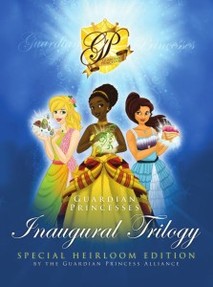 As part of our ‘pass through policy’ (Shaping Youth has a no perks/freebies/untethered approach to sponsorship) readers can leave a feedback comment which automatically translates into an “enter to win” offer.
As part of our ‘pass through policy’ (Shaping Youth has a no perks/freebies/untethered approach to sponsorship) readers can leave a feedback comment which automatically translates into an “enter to win” offer.
Leaving feedback enters you in the book drawing. It’s that simple.
This allows me to ‘pay it forward’ to parents and educators without being constrained by vested interests and disclosures and has worked well to keep my hands clean and my questions tough and objective.
To give you a feel for this inaugural trilogy:
Each Guardian Princess parable has vividly rich, colorful illustrations of eco-predicaments, adorable animals, communities collaborating with compassion and lilting rhymes peppered throughout the text, ending with a sweet stanza that recaps the theme of the story.
This one’s from Princess Mariana and Lixo Island:
“We pledge to do what is just and fair, to do our best to protect and care…
For all living beings great and small have worth…
We shall come together to take care of our Earth…
We’ll care for the ocean and the beauty of the sea…
So marine life can flourish, be happy and free…
We shall protect the seas, skies, and lands of all nations…
To be cherished and shared by the next generations.”
Definitely not your Disney channel tween takeaway.
These are not sassy preteens lobbing pithy one-liners in pop culture tween-snark sitcoms, this is an early reader experience, in those magical wide-eyed days of uplifting, aspirational wannabe positivity before any shred of cynicism sets in.
That could either be a strength or a downfall in today’s ‘kids getting older younger’ (KGOY) market of mini-me messaging, amidst the rise of ‘hipster parenting purchasers’ perpetuating the pop culture zeitgeist, no matter how short-sighted and damaging the messages may be. (“Baby skinny jeans?” Seriously? ugh. )
Personally, I feel little kids deserve to hold on to the sweetness and goodness of storytelling that inspires and nourishes souls with values and heart over vapid appearance cues and consumption, so these morality tales made me smile (and power pout a tad, wistfully thinking about how fast marketers have rushed childhood OUT of those halcyon days.)
This is where the Guardians shine as an alternative offering in the “all things princess” mindshare… self-sufficient “sheroes” who are stewards of the planet making things right in the world.
Mind you, a large part of me just wishes the whole princess thing would vanish (POOF!) with a magic wand…But it hasn’t, and it won’t…
Our allied org, Reach and Teach, (publisher of quality children’s literature specializing in alternative narratives) made it very clear that the 2014 market demand is still ever-present:
“We often have a grandparent, aunt, uncle, or ‘friend of a princess parent’ come into the shop and say “I’m looking for a gift for a girl who is really into the whole princess thing. I hate it, but…. Do you have anything that she might like but that isn’t, you know…”
We’ll start recommending age-appropriate books with strong female characters and the customer will more often than not say “I really don’t think she reads very much.”
Sadly, I think that’s actually a stereotype too since we’ve had a number of ‘little princess fans’ come into the shop with their parents, who of course know their child well enough to know what kinds of books their child might like, and they walk out with a variety of books, usually books that have NOTHING to do with princesses!” —Craig Wiesner, Co-Founder of Reach & Teach
Here’s the Reach and Teach Review of Guardian Princesses. They cited my own handling of my daughter’s brush with princess culture which I wrote about in “Breaking the Color Code & Princess Power” and I harkened back to how pristine the landscape was by comparison, and how pervasive it’s become since then.
Also, note that Setsu Shigamatsu (who left a comment on this post when our Brave Girls Alliance took Disney to task on their princessification of Brave’s Merida) is the GPA concept creator!…Clearly there are a lot of overlapping ties in the prosocial world.
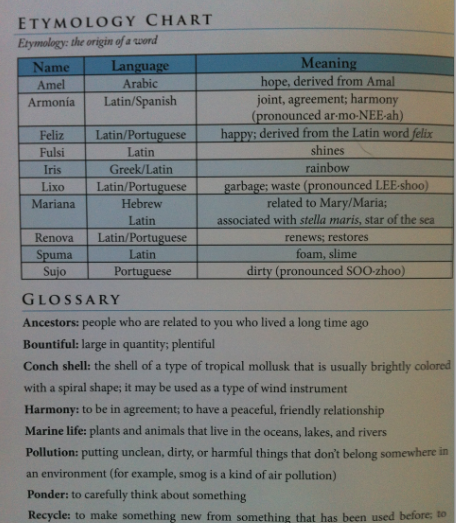 Favorite feature-wise, I liked the GPA “Etymology chart” at the end of each book as I feel it helps kids connect the dots on word origins, adds a media literacy lens by giving a glimpse into the mindset of the writer (there’s a reason for those name choices!) and also helps language formation with root stems and piecing together the puzzles of how words make meaning. (name generation and new product dev was my branding specialty once upon a time…)
Favorite feature-wise, I liked the GPA “Etymology chart” at the end of each book as I feel it helps kids connect the dots on word origins, adds a media literacy lens by giving a glimpse into the mindset of the writer (there’s a reason for those name choices!) and also helps language formation with root stems and piecing together the puzzles of how words make meaning. (name generation and new product dev was my branding specialty once upon a time…)
They’ve also included a glossary for new words learned (it’s geared to grades 2-4) and “Common Core Discussion Questions” which hints at their branding acumen targeting a higher realm of educational standards meets quality indie/alternative kid lit. So without further ado, here are some of my questions about the mission of Guardian Princesses with co-founder Ashanti McMillon.
It takes on a tonality of “in your face but on your side” (as teen whisperer Josh Shipp would say) as I try to ‘ditch my princess bias’ enough to get to the heart(felt) positives. Take it away Ashanti!
Shaping Youth in Conversation With
Ashanti McMillon of Guardian Princesses
Amy Jussel, Shaping Youth Why not take a strong, mythological or nature-based focus entirely and ditch the “princess” positioning altogether? (Note…NPR headlined, “Once upon a time the princess saved the environment…”)
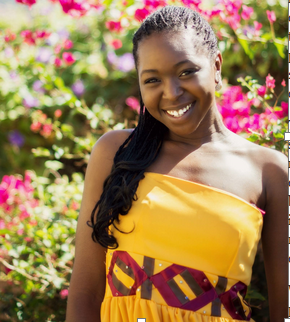 Ashanti McMillon, Guardian Princesses: The Guardian Princess may appear to look like other princess stories, but once you read the books, you can see they provide a new paradigm of values.
Ashanti McMillon, Guardian Princesses: The Guardian Princess may appear to look like other princess stories, but once you read the books, you can see they provide a new paradigm of values.
As you said, the whole princess and fairy thing has been done to death, but more specifically it’s a certain kind of princess that has been done to death— the damsel in distress whose happily ever after always involves being saved by a prince…That’s the kind of princess we’ve been used to seeing for decades. Now that it’s 2014, it’s time to present a different kind of princess because not all princesses wear dresses and wait for a prince.
The Guardian Princesses are strong, proactive leaders of their communities who use their skills to protect the people and their environment.
For these princesses neither beauty nor birthright is the focal point. They are problem-solvers and work together to demonstrate cross-racial cooperation. They are friends who come from diverse ethnic backgrounds and different ways of life.
We produced a song and a music video called, “My Heart Is True.” (scroll down) It is a positive and empowering rap song for children, especially young girls. I wrote the song as an anthem to say that anyone can be a princess not because of their looks or their material possessions, but because they are ready to make a positive change through their own lives to help others.
The chorus says, “A Guardian Princess is more than just her dress/ she’s not self-obsessed or a damsel-in-distress/ she is brave and kind, she uses her mind/ a noble leader who is one of a kind.”
From the success of Frozen, we see that children are not yet done with princesses.
It’s important to understand what kids like, but also how we can further edify them for healthy development. It’s like how kids love candy. They are attracted to the flashy, colorful wrapper, but it’s not nutritious. Our princesses have that same attractive colorful wrapper plus the enrichment provided through our multiple-faceted narratives. We think that the representation of princesses could be much better and address issues of racial, ethnic, and gender diversity, body-size, and disabilities.
Amy Jussel, Shaping Youth But why NOT just call them guardians, or goddesses, or “sheroes” or keepers of the planet, for more originality? (Especially given the pervasiveness of princess marketing pushback on the formula…)
Ashanti McMillon, Guardian Princesses: We believe that reclaiming categories and redefining them are vital means of progressive cultural transformation. If we don’t redefine what a princess means then she remains the typical white damsel in distress in a pink, frilly dress who relies on her looks to get by. Given how pervasive this dominant representation of the princess is today, we cannot simply dismiss and avoid it. That’s too easy. So, we decided to create diverse princesses who are leaders and role models that children can emulate.
The corporate media sells many more negative and unhealthy messages to children than positive, healthy ones. So why not “flip the message to the positive” and give children a new interpretation of princesses?
The Guardian Princess Alliance defines princesses as proactive leaders with the willpower to persevere through any obstacle that they face and that is something that many children can relate to. Strength to be who you are, enduring through it all, is the beauty from within that matters, and that’s what the Guardian Princesses represent.
Amy Jussel, Shaping Youth Specifically, how will you differentiate your offerings in a packed ‘princess’ marketplace and deflect comparisons to other ‘toy stories’? (i.e. The risk of being called a ‘Disney with diversity’ knock-off or a Capt. Planet & the Planeteers retread, or an American Girl mashup with Karito Kids prosocial dolls etc.)
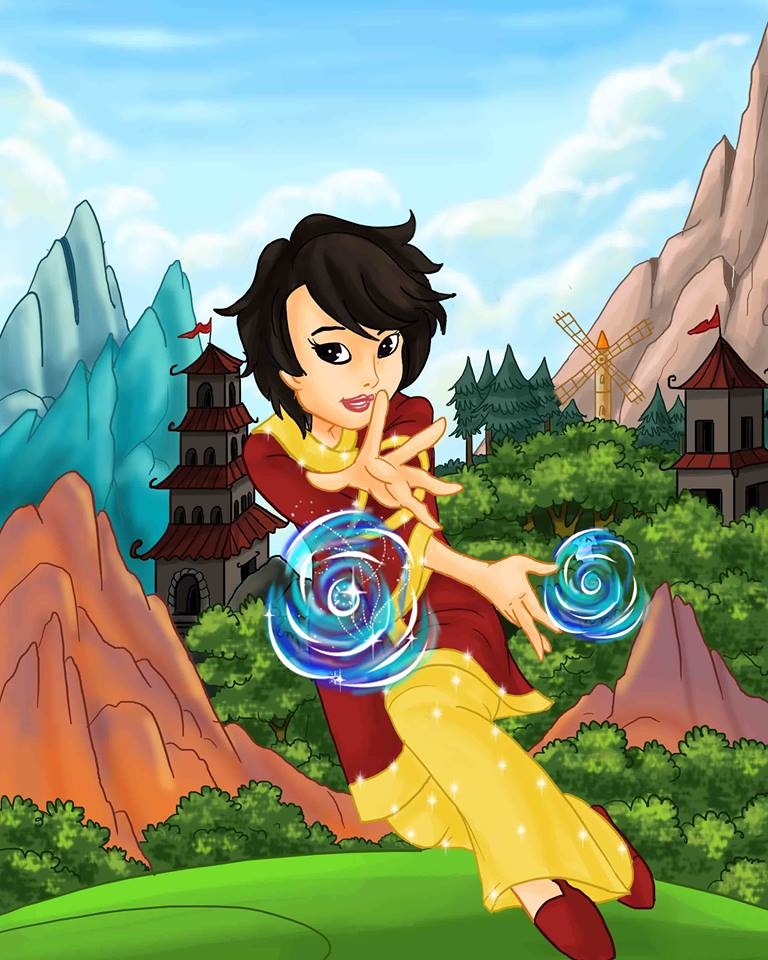 Ashanti McMillon, Guardian Princesses: It’s natural for us to be compared to other princesses and characters of past and present.
Ashanti McMillon, Guardian Princesses: It’s natural for us to be compared to other princesses and characters of past and present.
The difference is that we are intersecting race, ethnicity, and gender diversity with important messages about current issues. The first series of the Guardian Princesses includes a Latina, African, European, Pacific Islander, South Asian, East Asian, and Mixed heritage. In my time growing up, I’ve never seen anything like this in children’s media that shows intelligent women of color working together, displaying skill and bravery.
Our next princess, Ten Ten, will be unlike any princess before in popular culture. She will represent a gender independent princess who refuses to follow the gender norms of her culture.
As a tomboy at heart who loves to play basketball and tennis, I love that she is a princess who would rather wear pants and is athletic. Her story addresses the problem of bullying and creates an awareness of air pollution.
The fifth story of our series features Princess Leilani, our full-figure princess, who wears a size 14. Princess Leilani is the Guardian of the Healing Forests. She is a wise, compassionate community leader who heals those who are sick through natural remedies.
Amy Jussel, Shaping Youth With the education aspects imparted through schools, the narrative could be construed as ‘political’ (e.g. the first trilogy has definite corollaries, e.g. greed/stealing land easily applies from Hawaii to Native Americans etc. the Vinnea story about destroying crops/unnatural plant life has GMO overtones etc.) is the intent to remain outside the private/public school sector or inside? Is this an aspect you’ve addressed?
Ashanti McMillon, Guardian Princesses: Our goal was to create books that were entertaining and inspiring, but most importantly educational. The reading level is for grades two to four, and our questions are designed for the third grade. Our books are relevant and practical for public and private schools, as well as for use by those who homeschool.
Our stories allow for different levels and forms of interpretation. The most basic messages of our first three stories are about greed, healthy eating, and polluting the sea. As modern day fairy tales, we also want our stories to be relevant. Our stories can be interpreted as political lessons if and when applied to current issues. But such interpretations are dependent on how and whether readers, parents, and teachers want to make those connections.
For the kids, they like the adventure and what the princesses do to solve their problems. Hopefully, our stories can show them that they too can resolve problems in the real world. For those who are older and aware of current issues, they will notice that we talk about environmental issues, like sea and air pollution, that need to be addressed. Our stories encourage recycling, non-violence, and healthy eating, and we believe that most readers appreciate our messages.
Amy Jussel, Shaping Youth Tell me about how you’ve addressed the chasms in kidlit diversity issues (which we all know are abysmal) and why it’s so important to ‘see yourself’ in books, film, and other media, as our friends at Miss Rep/The Representation Project remind us all so often.
Ashanti McMillon, Guardian Princesses: According to the U.S. Census, in July 2013, half (49.9%) of the children under five were children of color. However, over the past few decades the average amount of multicultural content in children literature hovers at about 10%. This is a striking disparity. We started our series, in part, to address this lack of ethnic and racial diversity.
Growing up, I didn’t have much. In a low-income household, all I really had were the books, film, and other media as an escape and as a form of hope. Media takes us on adventures and when you see a character that looks just like you and even shares personality traits like yours, it’s so inspiring!
Since media is so influential and huge, especially from a child’s eyes, seeing someone that looks like you doing positive heroic actions is how we can inspire others to do the same.
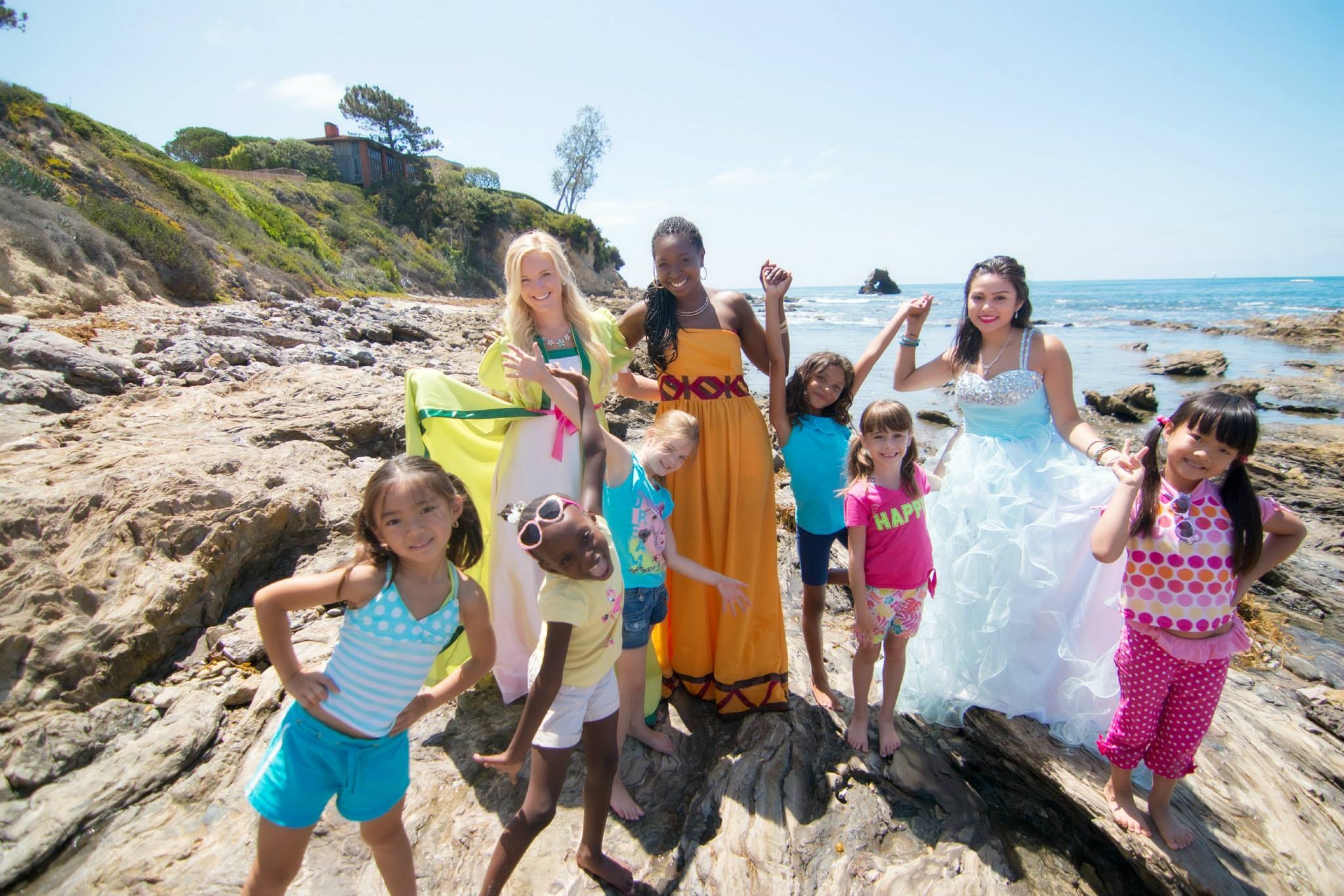 A child should have more than the white male hero that we usually see in the majority of the media.
A child should have more than the white male hero that we usually see in the majority of the media.
Children should be introduced to Black s/heroes, Latino/a s/heroes, Asian s/heroes, plus-size s/heroes, tomboy s/heroes, disabled s/heroes, shy s/heroes, and many other types of s/heroes that exist in real life. This would help ease marginality and the stigma of stereotypes that are placed on these groups.
The chorus of our song is for the children, who, like myself have experienced many hardships.
We want to say, “You can still be a heroic princess for overcoming your struggles and making it this far.”
We define a princess to be a person who lives her life with integrity no matter what the circumstances. Regardless of her past or what she faces, she possess determination to make a positive change for herself and her community.
Amy Jussel, Shaping Youth Your site says you’re using the ‘pretty/slender’ marketing norm purposely to segue into larger acceptance…Why not just differentiate at launch with body diversity and more natural, real girl proportions from the start? Especially with parent and market demand embracing realism, and rebelling against Photoshop and unattainable beauty ideals? (see BGA initiative: Truth in Advertising Act, H.R. 4341)
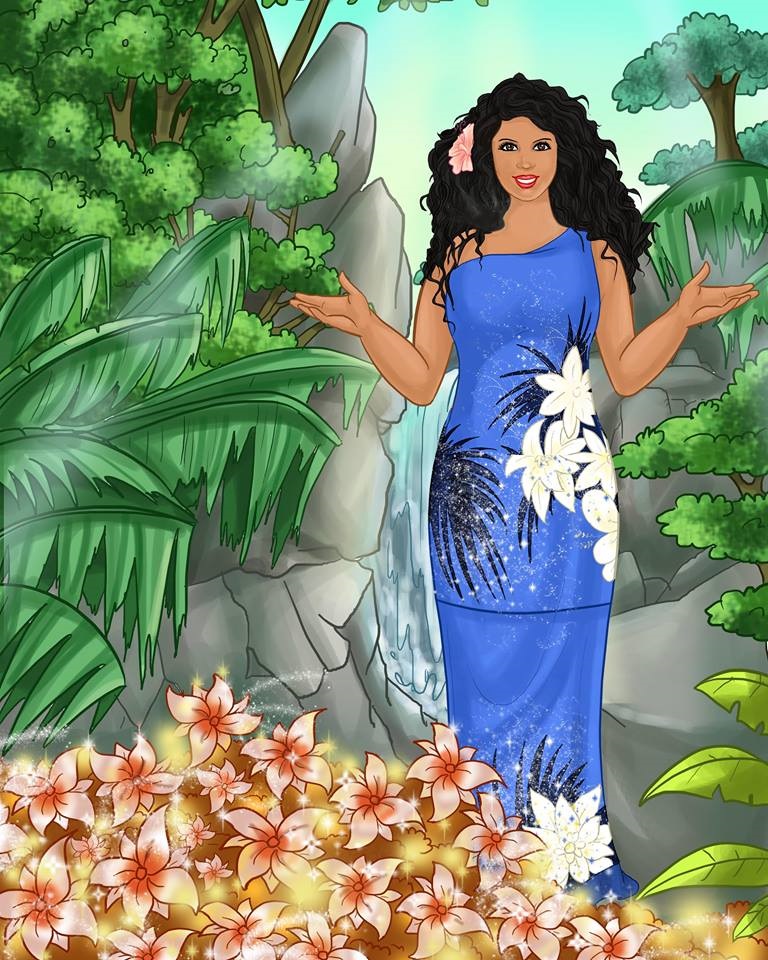 Ashanti McMillon, Guardian Princesses: With the media constantly engraining pretty and slender as “the norm,” we decided to use their definition of “the norm” in order to introduce the other forms of beauty.
Ashanti McMillon, Guardian Princesses: With the media constantly engraining pretty and slender as “the norm,” we decided to use their definition of “the norm” in order to introduce the other forms of beauty.
When we first launched the series, we introduced more “real size princesses,” with Princess Leilani, Guardian of the Healing Forest introduced as a size 14.
We also have Princess Aiyana, Guardian of the Animals as a size 10-12. Princess Ten Ten, Guardian of the Skies, is flat chested. Princess Vinnea, Guardian of Plant Life, has got some hips. Princess Saya, Guardian of the Lakes and Rivers, is one of our taller princesses. Princess Terra, Guardian of the Land, is one of our shorter princesses and Princess Mariana, Guardian of the Seas, has toned, defined arms because she loves to swim and stay active. We started with more real girl proportions, ranging from size 2-14, and it’s a work in progress.
There are so many dimensions that we wanted to address because they all intersect. With these princesses, we really aimed to present racial diversity and cross-racial harmony and friendship; challenge gender norms and provide new narratives to redefine the princess; and represent body diversity to show the different shapes and sizes we all come in. To simultaneously cover all of these themes and make sure that we could address all of these points was not an easy task. It’s always a learning experience and as we continue with the next stories, we are making sure that these magical princesses come in realistic and diverse sizes.
Amy Jussel, Shaping Youth How has the love of nature, animals and the outdoors become a priority in the development of your GP books and research; was it Setsu Shigematu that guided this pathway or the ongoing studies about ‘nature deficit disorder’ and the ‘extinction of experience’ without exposure to natural environs that has made this a key point of advocacy in the GP work?
How can we best instill this connection of planet keepers or stewards/saviors superheroes? And what about the boy guardians of the planet? How does gender factor in to the development of the book series? How does the nature/guardian credo of compassion apply universally and inclusively to boys and all creatures great and small?
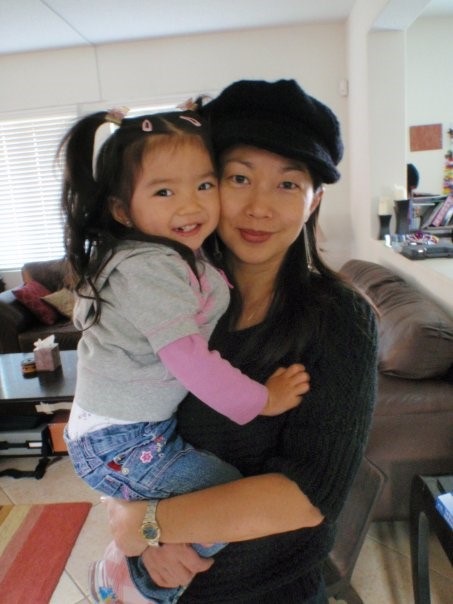 Ashanti McMillon, Guardian Princesses: Setsu Shigematsu, the founder of the series, guided this path when she wrote the first Guardian Princess story, Princess Terra and King Abaddon. From there, she wanted to introduce other princesses who have a connection with nature and how they can teach kids to care for the environment.
Ashanti McMillon, Guardian Princesses: Setsu Shigematsu, the founder of the series, guided this path when she wrote the first Guardian Princess story, Princess Terra and King Abaddon. From there, she wanted to introduce other princesses who have a connection with nature and how they can teach kids to care for the environment.
In the books and in the song, we have rhymes that promote the importance of taking care of the Earth because it is our home. It is imperative that kids learn about the interconnectedness of people and nature since they will be the stewards of the planet in the future.
A Guardian Princess earns her title because of her actions that protect the people and the environment. It is a position that she earns, not inherits, because of her compassion, intelligence, and skills.
We want to show that a princess is not afraid of a little dirt to plant and garden. A princess is not afraid to get her hands dirty to clean up harmful trash on the beach. A princess loves to ride horses and is willing to work to care for her animal friend. A girl or boy can connect with the Guardian Princesses because it’s their actions that they relate to.
We also plan to create a platform of diverse, male role models for children to emulate. In Princess Mariana, Guardian of the Seas, we have a prince who will be a Guardian Prince. We are excited about our future Guardian Princes but we started off with the Guardian Princesses to respond to the many images in the media that objectify and sexualize women and girls.
Amy Jussel, Shaping Youth Tell us more about your GPA team…for example, how involved will Setsu Shigematsu be in the direction of the kidlit line extension and how much has she been involved in the first trilogy now available? Is the marketing side and creative/conceptual side separate? What is YOUR role as co-founder and how have you all divided up the workload/roles?
Ashanti McMillon, Guardian Princesses: Ever since writing Princess Terra and King Abaddon for her five-year-old daughter, Setsu Shigematsu has been involved in every aspect of the Guardian Princesses.
From the stories to the look of the princesses to the last edit of each story, she reviews each stage.
We both are engaged in all phases of production and development and it has been a wonderful experience working closely with her on both the creative and marketing side. We both love the creative side and are passionate about creating a better world for children.
As the co-founder I wear many hats. I am the author of the second and third stories, the treasurer, the songwriter, the organizer, create content for social media, perform as Princess Vinnea, and do any other tasks that need to get done.
It’s definitely been a lot of hard work, but it’s so rewarding, especially with a great team. It’s wonderful to experience how your strengths, talents, and skills can blossom in a supportive environment like the Guardian Princess Alliance (GPA).
Since being a part of GPA, I’ve met so many great people. Our team is racially diverse and comes from different backgrounds, yet we all share the same positive vision.
Kelsey Moore, a graduate student at USC, is our project assistant. Al Dupont, a fellow UCR alumnus is our videographer and filmed our music video. Kayla Madison, another fellow UCR alumna and art teacher, and Juliann Anesi, an educator who specializes in disability studies, are co-authoring the Princess Leilani story. Vikram Sangha, a graduate student at Columbia, is our wonderful graphic designer and layout artist. We also have interns in Northern and Southern California who serve as our ambassadors. Plus, we have had many more great people who have helped the Guardian Princesses grow with their support, advice, and encouragement.
Amy Jussel, Shaping Youth I see a ‘donation’ button in addition to the storefront, and all discussion/activities cite Common Core education standards…Are you set up as a commercial entity, or a nonprofit, social enterprise? (B corp etc)
Distribution wise, do you have an alliance with Scholastic or is this an indie publishing interplay using smaller media alliances vs big box retailers…Or is it an online/direct sales web effort or what? Do you foresee dolls and merchandising down the line?
Ashanti McMillon, Guardian Princesses: Currently we are set up as a small business, but we intend to pursue non-profit status in the coming year. We designed our books so that they would be helpful to teachers, librarians and parents who homeschool. Our books are perfect for class or for a bedtime story.
We began as an indie publisher because we wanted to maintain creative control over our first series of books. In the future, we are open to pursuing other distribution options on a larger scale, like Scholastic, but since we are just starting out, we wanted to focus first on developing the world of the Guardian Princesses for the first year.
And kids have been asking for dolls, lunch boxes, and backpacks already. If we grow to be able to offer such merchandises, we will likely also start on a small scale as well. When the time comes for the creation of Guardian Princess dolls, we want to make sure that the doll has realistic body proportions and features.
Amy Jussel, Shaping Youth The “meet kids where they are” marketing strategy has backfired a lot recently in girl power circles (e.g. Barbie/Mattel’s STEM/Scouting badge, Goldieblox leveraging princess popularity, Lego Friends salons, etc.) How do you plan to carve out a niche with GPA as the positive princess alternative? And using what channels?
Ashanti McMillon, Guardian Princesses: Rather than offering another commodity within a commercial framework, we are not profit-oriented. We function much more like a grass-roots organization that is concerned with a better quality educational content for kids. We rely on word of mouth and social media, and thus grow more like a social movement than a corporation or typical business. We envision ourselves as a hybrid social movement-nonprofit-business model. We welcome collaboration with like-minded folks so we hope people will continue to reach out and connect with us.
Amy Jussel, Shaping Youth Thanks, Ashanti for tackling this conversation.
Don’t forget to leave feedback/a comment to automatically enter to win the trilogy!
What do you think of the role of the princess as heroine?
How would YOU like to see prosocial, positive change depicted?
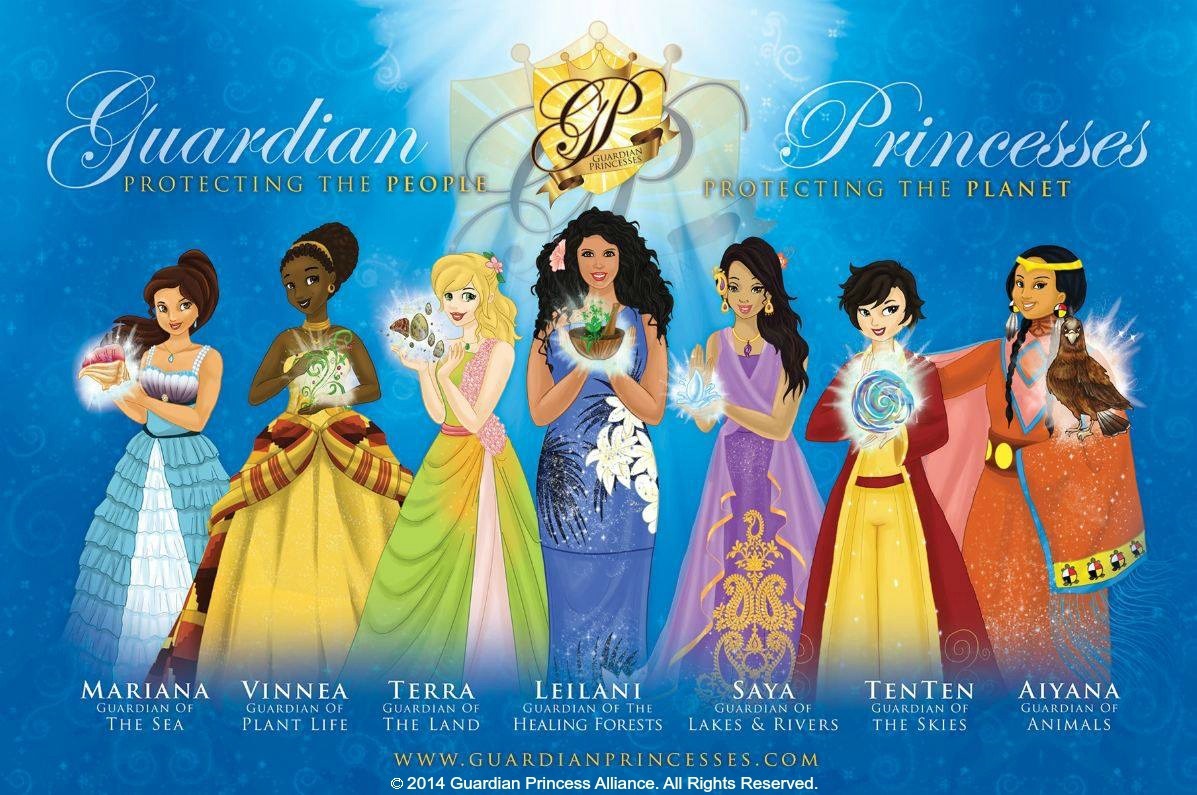
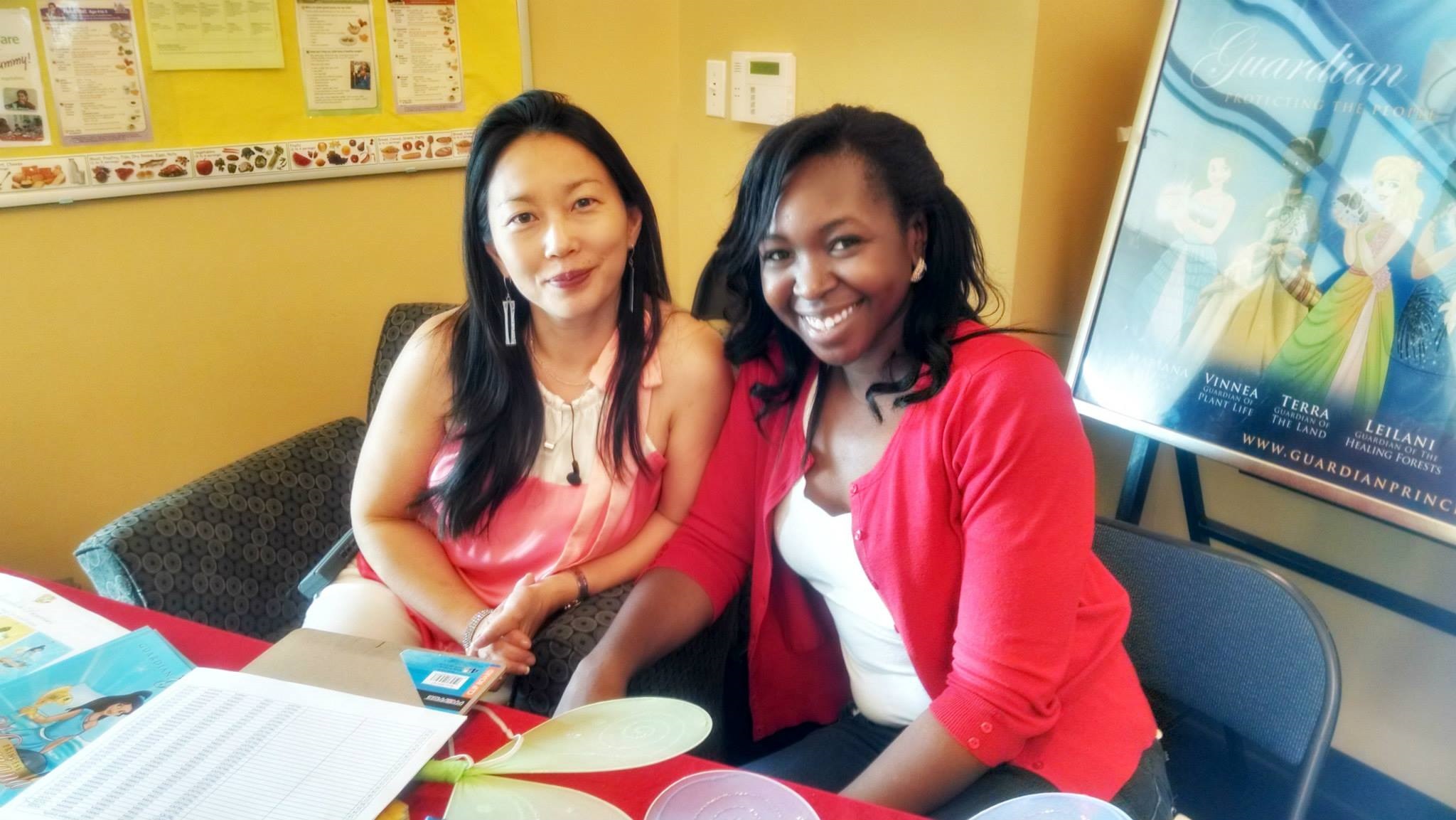









Yes! Love this! It’s definitely time for a change! There are real life princesses throughout history that are strong and resilient, and that is the kind of princess that our girls should be influenced by. This is a great step towards that direction.
I think this could be a successful way to get many girls out of the “I’m a princess, save me” mode and more into the self-sufficient, accomplished mode. While the product does still perpetuate the princess as the ideal, the big ship is slow to turn. We should offer our girls all colors of the spectrum but in lieu of that, this is a good alternative to extreme pink or here, play with cinder blocks.
Thank you both for taking the time to comment…I’ll tweet this out a few more times to try to get more feedback, as social media comments on FB and Twitter ‘count’ for the ‘enter to win’ concept too…
We’ll make sure the giveaway is wrapped up next week in time to inspire kids with eco measures to kick off the new school year with ‘alternatives’ to the princesses narrative…so keep the feedback coming as they’re in startup mode and can use all the input they can get! Now’s the time to add your voice to their vision…
Congratulations, Monica…you’ve won the drawing for the book! I entered names of anyone who retweeted the post, and commented here or on Facebook…Pls. email me via amy at shapingyouth dot org as to where you’d like it sent. (and let me know how it goes on seeding prosocial/nature to kids!) Thanks…
And DeCuba, you might like this post about princesses and history which I was just re-reading in terms of a group doing a ‘different kind’ of camp…teaching about REAL responsibilities and cross-cultural mandates in the leadership arena throughout history…. Worth a read–> http://pigtailpalsblog.com/2014/08/a-princess-camp-worthy-of-our-girls/